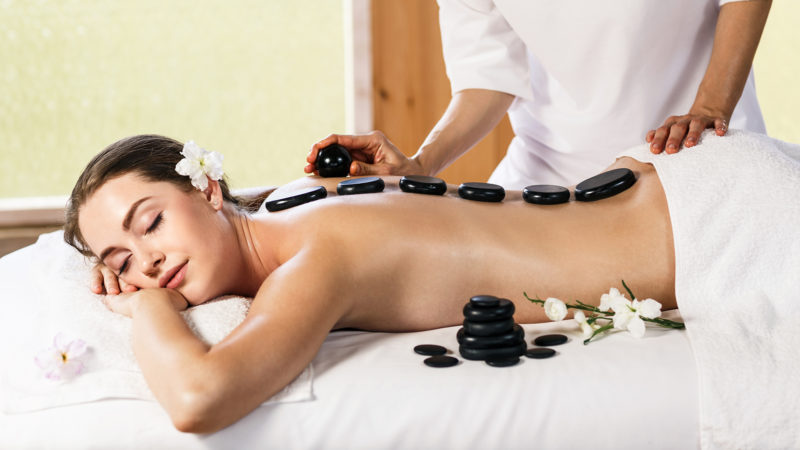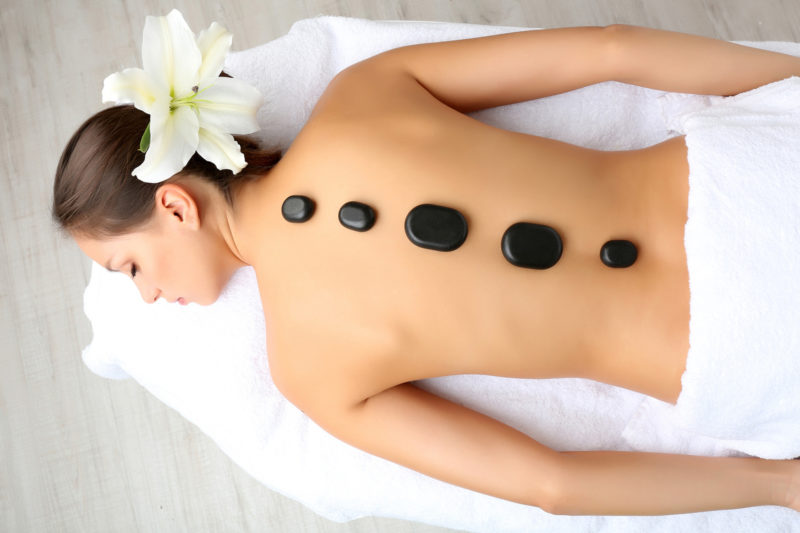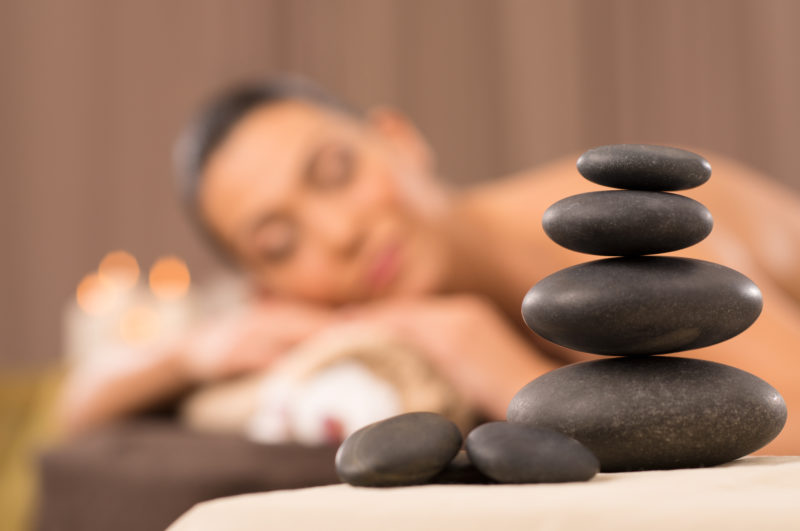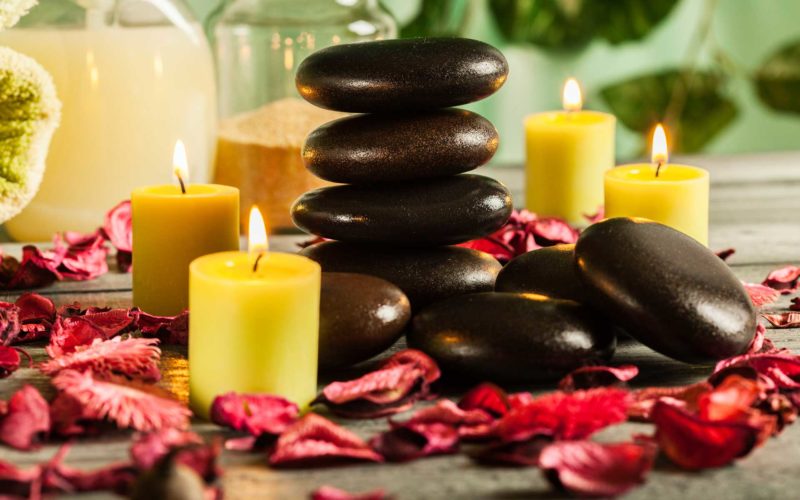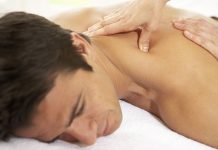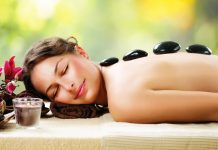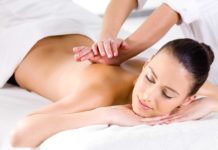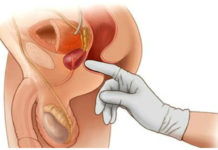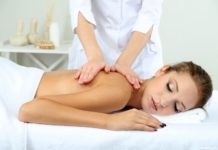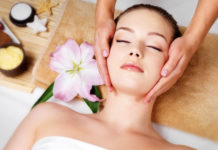Stone therapy is a very pleasant and effective spa procedure, during which exposure to hot stones is performed. It gives deep relaxation and a decrease in muscle tension, therefore it can be used both for therapeutic and prophylactic purposes.
Material Content:
What is stone therapy
The use of stones to influence the body was first proposed in the East several thousand years ago. This method came to us from Japan, its history goes back several millennia. Mention of such a massage technique can be found in the history of ancient Rome, but the American Indians used the method not only to relax the body, but to reveal the spiritual potential of a person.
Today, stone therapy is a separate area in spa cosmetology. During the procedure, massage is carried out with hot stones, which alternate with cold. Moreover, volcanic rocks are used, with their help they act on different biologically active (acupuncture) points of the body.
Stone massage provides:
- deep relaxation of the whole body;
- improvement of blood circulation in the affected area;
- lymphatic drainage;
- strengthening immunity;
- increased skin turgor.
The method has many medical indications, but can also be used for preventive purposes, as it has a tonic effect on the entire body.
Types of Stone Massage
The main direction of stone therapy is relaxation. This procedure is very popular and is offered in all spa centers.But this is not the only kind of “stone” impact that may interest a person.
The following types of massage are distinguished:
- tonic - gives a charge of vivacity, improves well-being and improves performance;
- restoring - helps to get rid of stress and remove muscle blocks and clamps;
- painkiller (sedative) - used for pain in muscles and joints, used to treat diseases of the spinal column;
- anti-aging - increases skin elasticity, relieves stress, normalizes complexion.
The effectiveness of stone massage is due to the stimulation of local blood circulation. Exposure to hot and cold stones is a kind of training for blood vessels, as a result of which blood flow and lymph outflow are normalized, swelling is reduced, metabolic processes and collagen synthesis are accelerated.
The stones for stone therapy play an important role. As a rule, preference is given to two breeds - this is basalt and white marble. Basalt retains heat for a long time, therefore it is used for hot massage. Marble always has a low temperature and is used for cold massage.
Some centers offer exotic treatments - massage with amber, pearls, lapis lazuli. Each stone has its own unique properties.
On average, one massage session takes about an hour. At the same time, part of the time can be spent on solving a specific health problem, and the rest is a general relaxing or tonic massage, depending on the indications.
Indications for the procedure
Despite the fact that the main focus of stone therapy is relaxation, this method of relaxation will help to cope with various diseases more quickly.
Indications:
- migraine and stress cephalgia;
- stress;
- apathy;
- chronic fatigue and asthenic syndrome;
- trouble sleeping;
- osteochondrosis;
- neuralgia;
- bursitis;
- arthritis;
- chronic prostatitis;
- cardiopsychoneurosis;
- weather dependence.
And also this type of reflexology is recommended for professional athletes for quick muscle recovery after intense training and heavy physical exertion. For women suffering from PMS, a massage will help reduce symptoms and improve overall well-being.
Preparation and execution technique
The procedure is performed on pre-prepared skin. It is necessary to take a shower or a relaxing bath, soften and warm the skin. Usually, masters use a gentle massage using aromatic oils to warm up.
The general attitude is also very important for the expected effect. You need to tune in to the procedure, clear your thoughts, you can first conduct a meditation session. It is important that during the massage, nothing distracts, so the work phone and everyday worries must be left outside the specialist’s office door.
The technique of execution depends on the type of massage, goals and skills of the master. Stones warmed up to 40-600 C are sequentially located in acupuncture points: along the spine, on the lower back, hips and palms. The algorithm for placing stones depends on the testimony. So, with gynecological and urological diseases, the lumbar zone is warmed up, with pathologies of the cardiovascular system, it is necessary to influence the area below the shoulder blades. To stimulate blood flow and normalize vascular tone, alternating exposure to heat and cold is performed.
Is it possible to massage with stones at home
Theoretically, it is not difficult to master the massage technique, but stone therapy at home is unlikely without the help of others. The fact is that during the procedure a person should lie relaxed with his eyes closed. If you have to banish to put a stone on your back, there can be no talk of any relaxation.Thus, in order to get the maximum effect, you need to trust a professional in a specialized spa center or reflexology clinic.
Contraindications
Before signing up for a massage, it is necessary to study the indications and contraindications. If everything is clear with the indications, and stone therapy can be used simply for the prevention of diseases or general relaxation, then contraindications should be considered in more detail.
It is necessary to refuse the procedure in the following cases:
- any inflammatory diseases;
- acute infectious diseases, including influenza and SARS;
- malignant and benign tumors;
- dermatological problems;
- pregnancy;
- epilepsy;
- severe mental disorders;
- severe hypertension.
Eliminating the condition when the massage is contraindicated, you can safely sign up for the first session, which, as a rule, leaves no one indifferent. Only 10-15 procedures will help improve overall well-being, strengthen the nervous system and get rid of muscle clamps. The duration of the treatment of diseases of the musculoskeletal system is determined individually for each person.


